| |
|
6000 Year Old Art of Falconry - Mongolia |
|
Falconry is thought to have its roots in Central
Asia around 6,000 years ago. The Mongolian eagle hunters practice this
tradition on horseback. The purpose of hunting is seen as a tradition of
honor. |
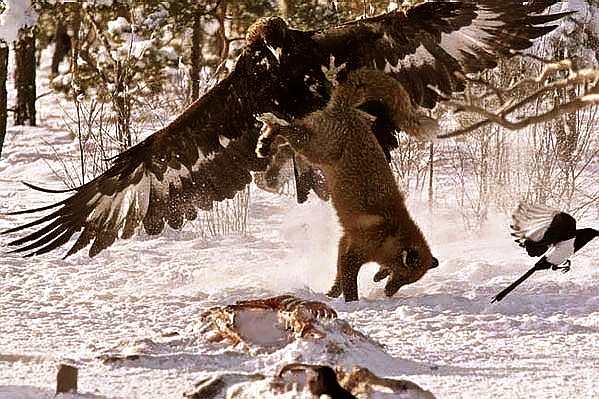 |
Video
Hunting Wolves in Mongolia
with Golden Eagles
In western Mongolia, an ancient tradition of hunting
with Golden Eagles is still alive. We know from history that Genghis
Khan had 1,000 hunting birds - eagles, falcons and gyrfalcons - and
so did Kublai Khan.
There were protected areas in the steppe marked with stones where only
the khans were allowed to hunt. The Kazakhs of Mongolia train their
eagles to hunt and here the bird of prey is often considered a family
member.
|
The Berkutchi is a Falconer who hunts with the Golden
Eagle. The training of this bird was seen as difficult and even
perilous even by the experienced. The bird is never a slave of its
owner, only a partner in hunting. From ancient times, Berkutchi
Falconers in the nomadic herder societies had the role of preserving
and stocking furs. The high social status of the Berkutchi and his
family was conditioned by the climate, as warm strong and durable
clothing for the people during the winter seasons was a vital necessity.
Best suited for this were the pelts of wolves and foxes.
Apart from hunting, Berkutchi can give spiritual support to
pregnant women, who experience or may experience difficulties in
childbirth. The bird, in the cultural imagination of Asian peoples is a
symbol of well-being and power. According to folk wisdom, a Berkutchi
is the indisputable authority in the sphere of childbirth or of renewing
fertility. In the cultures of many nomadic and semi-nomadic peoples of
Asia, it is said that a Berkutchi, regardless of age, can make
pregnant a woman who for a long time had not had children. |
 |
|
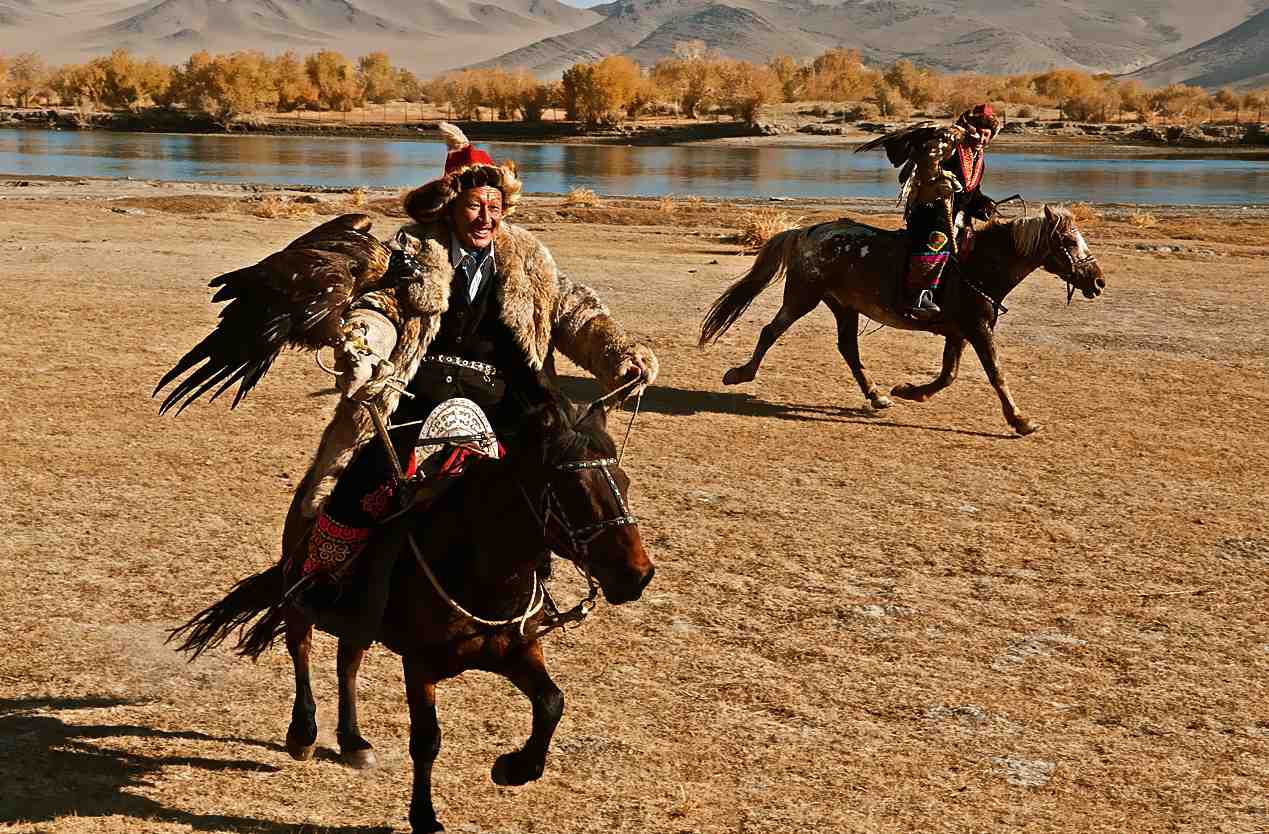 |
|
 |
|
In areas of China, Kazakhstan,
Russia and Mongolia
Men have been using birds to hunt for meat and fur
for as long as tribal memory |
|
China's Kazakh - Ethnic Minority
|
|
Qinghe County in China's
Northwestern Xinjiang Province |
|
Chinese Kazakh with their Eagles in the Mountains
of Northwestern China |
|
The Training and Handling of the Large Birds of
Prey follows a 'Strict set of Ancient Rules' |
|
Ancient People Live Among
the Reindeer |
|
The Altai Mountains of Outer
Mongolia in Central Asia |
|
The Mongolian Tribe's Name is the
Taiga Dukha
Named after the Taiga Region Mountain Range in Khovsgol, Mongolia |
| This idyllic land was described in 518 BC by the Greek poet Pindaras as
"Hyperborea" and the tribe as a healing race living peacefully
where “neither disease nor bitter old age is mixed… in their sacred
blood; far from labor and battle…” It's neighbored by the Russian
border and the remote Darkhad Valley. The area is noted for its
inaccessibility and remoteness, even by local standards.
Although the Dukha call the area home, they are certainly not a
dominating force. They readily share their space with an incredible
array of their animal neighbors. |
|
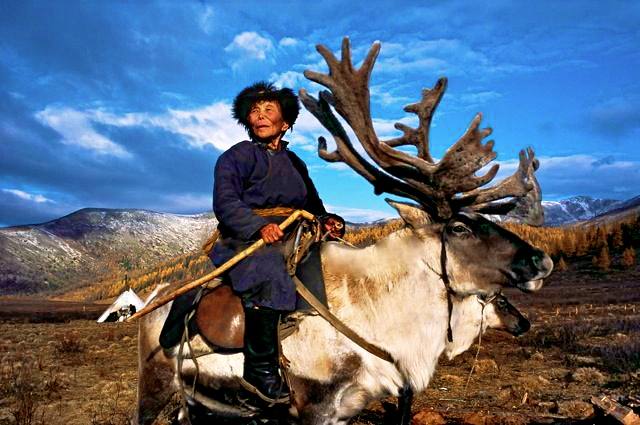 |
|
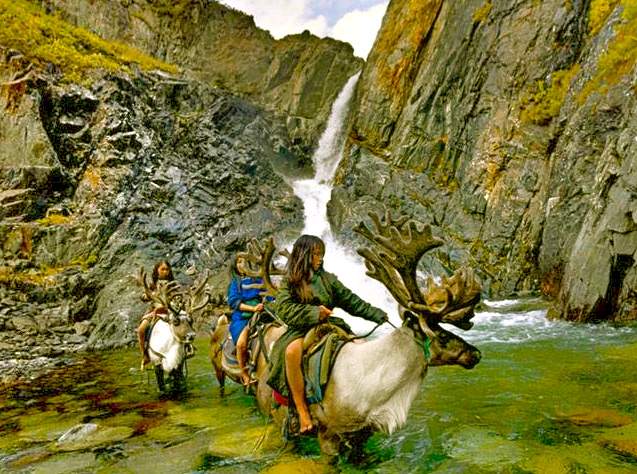 |
|
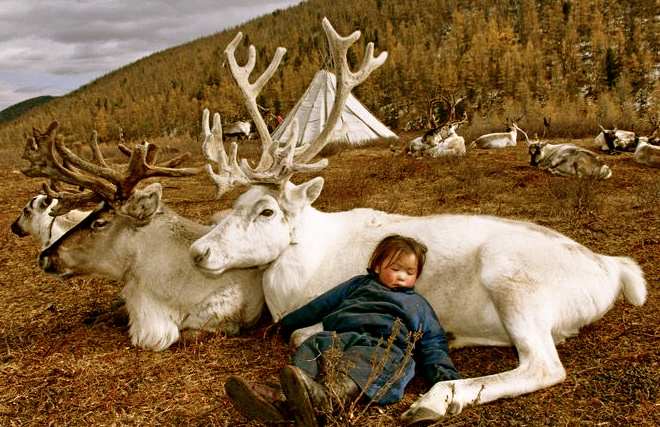 |
The Dukha practice Tengrism - a Shamanistic Religion that
emphasizes Totemism, the spiritual connection and kinship with
animals, plants and spirit beings. There's a seamless blend from
Totemism in religious practice and everyday life.
The Dukha have for generations bred docile reindeer, although never for
meat. Their unique form of reindeer husbandry is keenly conscious of the
area's conservation and bio-diversity. The reindeer provide a great
means of transportation along the rough terrain for migrating, hunting
and occasionally taking trips into town. Nearby villages will often
purchase and collect the antlers the reindeer naturally shed during
wintertime. |
| Beyond the Reindeer, Dukha have a tradition of Eagle Hunting. One of
the most honorable titles passed down by generations is the Eagle Hunter
who tames and trains Eagles to hunt small prey for food. |
|
Wild Horses, Bears, Eagles and
Wolves - Common to Khovsgol's Landscape |
|
